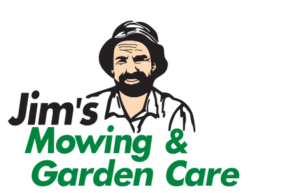Can You Mow Lawn Wet?
Mowing the lawn is routine for many homeowners, but what happens when it’s wet? Can you mow a wet lawn? This question often arises during rainy seasons or early mornings when dew covers the grass. While it is possible, it’s generally not recommended. Let’s dive into why mowing a wet lawn can be problematic, how long you should wait, the impact on your mower, and some tips for mowing when the grass is damp.
Can you mow in the rain?
Mowing in the rain is not recommended due to safety risks, such as slipping on wet grass and reduced visibility. It also leads to uneven cuts, mower clogging, and potential damage to your lawn and mower. Wait for dry conditions for the best results.
Can You Cut a Wet Lawn?
Technically, you can mow a wet lawn, but it’s not advisable. Wet grass can create several issues that make mowing more challenging and potentially damaging to your yard and mower. Understanding the risks involved can help you make an informed decision.
Why is it a Bad Decision to Mow a Wet Lawn?
Mowing a wet lawn is generally not advisable due to several inherent dangers. Here’s why it’s risky:
Slippery Conditions: Wet grass creates a slick surface, making it easy to lose control of the mower. It can result in accidents or uneven mowing.
Clumping of Grass: Wet grass tends to stick together, forming clumps. These clumps of wet grass can clog your lawn mower, causing it to stall or operate inefficiently. Clumps on the lawn can smother the grass beneath, leading to dead patches.
Uneven Cuts: Wet grass doesn’t stand upright like dry grass. It can result in an uneven cut, leaving the lawn patchy and poorly maintained.
Spreading Disease: Wet conditions are ideal for fungal diseases. Mowing wet grass can spread these diseases throughout the lawn, as the mower blades can transfer pathogens from one area to another.
Soil Compaction: Wet soil is more prone to compaction. The mower’s weight can compact the soil, reducing aeration and hindering grass growth.
Damage to Grass: Wet grass blades are more delicate and can tear rather than cut cleanly, making the grass more susceptible to disease and stress.
Mowing a wet lawn presents multiple hazards that can affect the lawn’s health and the person mowing’s safety. Waiting for the grass to dry is usually the best approach to avoid these issues.
How Long Should You Wait to Mow a Wet Lawn?
The ideal time to mow your lawn is when the grass is dry. But how long should you wait to mow a wet lawn?
- Dry Weather: Wait until the grass is completely dry. It usually means waiting until later in the day after the morning dew evaporates or a few days after it rained.
- Dry to the Touch: Touch the grass. If it feels dry to your hand, it’s safe to mow.
- Check the Soil: Ensure the soil is smooth. If your lawn is still waterlogged, the mower’s wheels can create ruts, damaging the lawn.
Does Wet Grass Affect Your Mower?
Yes, wet grass can significantly affect your mower:
- Clogging: Wet grass clogs the mower deck and discharges the chute. It not only reduces efficiency but can also lead to mechanical issues.
- Rusting: Moisture can cause metal parts of the mower to rust, especially the blades.
- Increased Strain: Mowing wet grass puts extra strain on the engine and blades, potentially leading to premature wear and tear.
Tips to Mow Lawn Wet
If you must mow your wet lawn, here are some tips to do it safely and effectively:
- Sharpen the Blades: Ensure your mower blades are sharp. Sharp knives make cleaner cuts, reducing the likelihood of tearing the grass, which can lead to disease.
- Raise the Mower Deck: Set your mower to the highest cutting height. It reduces the amount of grass being cut at once, minimizing the chance of clumping.
- Slow and Steady: Mow slowly. Wet grass is heavier and can be more challenging to cut. Taking your time helps ensure an even cut and prevents clogging.
- Clear Clumps: Periodically stop to clear any clumps of wet grass from the mower deck. It prevents clogging and ensures the mower runs smoothly.
- Change the Mowing Pattern: Mow in a different pattern than your usual route. It helps prevent soil compaction and lawn rutting.
Conclusion
Can you mow a wet lawn? While it’s possible, it could be better. Wet grass can create many issues, from uneven cuts to potential damage to your mower. If you need to mow in less-than-ideal conditions, following the tips can help mitigate some risks. However, waiting until the grass is dry is always the best option for the best results and maintaining a healthy lawn.


